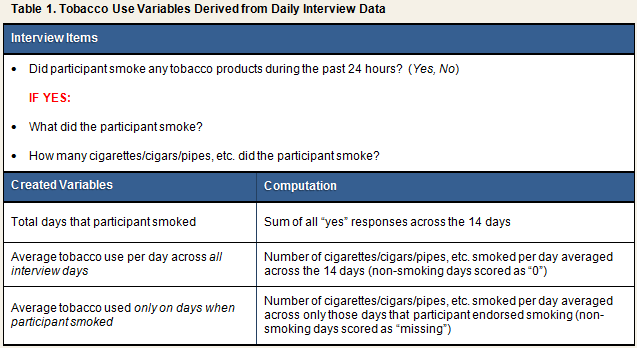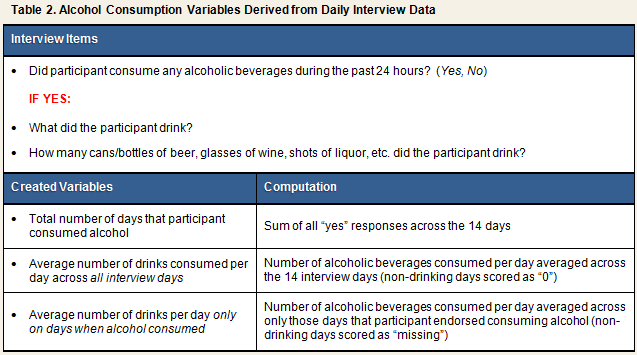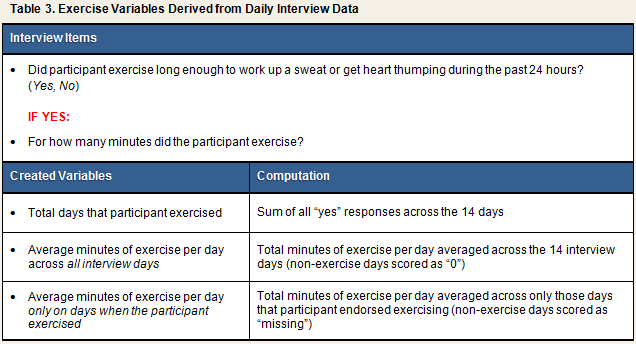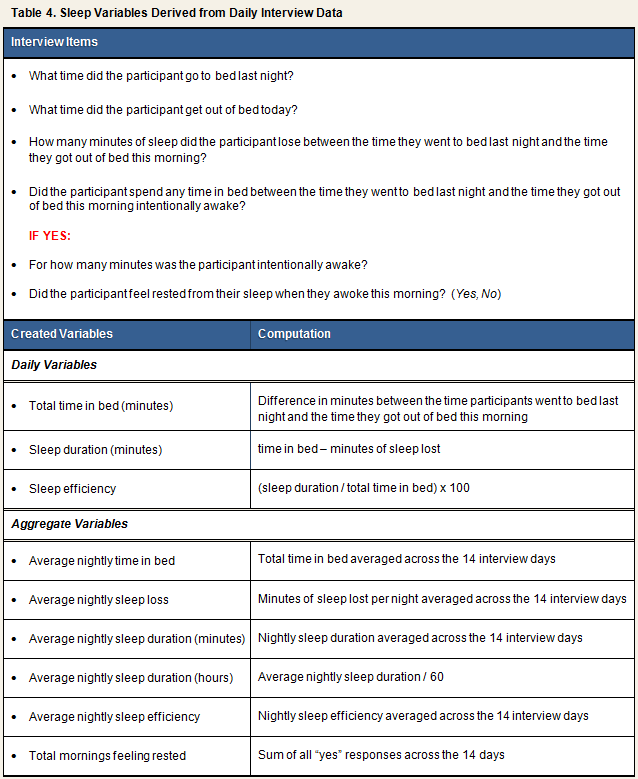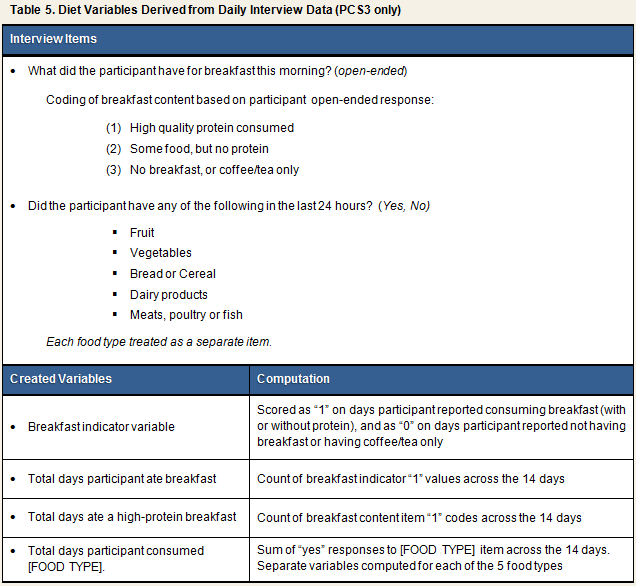Daily Health Behaviors (PMBC, PCS3)
Title
Daily Interview Health Behavior Scale (PMBC, interview pp. 3 & 6; PCS3, interview pp. 3, 5, & 7)
Copyright Information
Not a copyrighted scale
Primary References
1. Brissette, I., & Cohen, S. (2002). The contribution of individual differences in hostility to the associations between daily interpersonal conflict, affect, and sleep. Personality and Social Psychology Bulletin, 28, 1265-1274.
2. Cohen, S., Doyle, W. J., Alper, C. M., Janicki-Deverts, D., & Turner, R. B. (2009). Sleep habits and susceptibility to the common cold. Archives of Internal Medicine, 169, 62-67.
3. Cohen, S., & Lemay, E. (2007). Why would social networks be linked to affect and health practices? Health Psychology, 26, 410-417.
Purpose
To assess participants’ typical levels of engagement in daily health-related behaviors.
Description
Participants completed daily interviews at the same time each evening on 14 consecutive evenings. During the interviews, participants answered questions regarding tobacco use, alcohol consumption, exercise, sleep habits, and diet (PCS3 only). For PMBC, the sleep questionnaire appears on page 3 of the PMBC interview form (unmarried/married); items pertaining to tobacco use, alcohol consumption, and physical exercise appear on the last page. For PCS3, items asking participants to report the time they woke that morning and the time they went to bed the preceding evening are included as part of the Daily Social Rhythm Metric questionnaire on page 3 of the PCS3 interview form. The remaining sleep items and questions related to dietary intake appear on page 5; items pertaining to tobacco use, alcohol consumption, and physical exercise appear on the last page of the form.
Scaling
Varies across applicable questions
Number of Items
PMBC: 14
PCS3: 20
Psychometrics
None published
Variables
Daily interview items pertaining to tobacco use, alcohol consumption, physical exercise, sleep, and diet are listed in Tables 1 through 5, respectively, as well as the algorithms used to create derived variables. With the exception of the diet measures (Table 5), all interview items and derived variables are identical across PBMC and PCS3.
